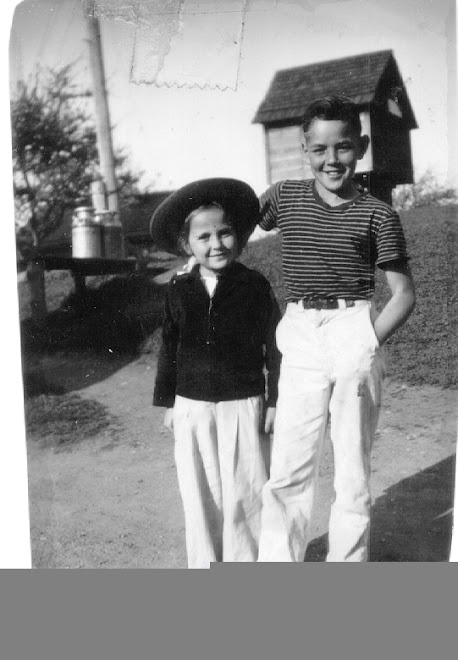This summer, I took two courses at the local community college in order to meet some requirements for my undergraduate degree at my university. I took a Physical Education course, that also involved some nutrition information, and Environmental Science. The Physical Education course did make me think about movement and what I eat, but my Environmental Science course involved a project that we had to present to our class using PowerPoint.
We chose topics that were of interest to us, and formed groups. The topic my group discussed was Seed Banks and the Future of Our Food. What we uncovered was really quite revealing and changed how I approached my gardening, daily purchases, and awareness. Here in the United States of America, we are fortunate to have the soil and water we need at the moment to grow our food. The forethought of others to stow seeds in a seed vault or seed bank I always believed to be quite interesting. Now, it makes me wonder how imperative it actually is.
I learned more about GMOs (Genetically Modified Organisms) and a company called Monsanto than I ever dreamed I would. The Monsanto opponents have been very vocal, and there are postings all over Facebook that "inform" you as to what you are really eating. How to choose a traditionally grown or organic piece of produce over a genetically modified one. So, what makes the genetic modification so frightening? Humans have been modifying crops and domesticating them since the Fertile Crescent c. 10,000 bce.
What is frightening, alarming, chilling, whatever word you choose to use, is the fact that not only plant species are being crossbred. In 1991, a company called DNA Plant Technology submitted a request to the FDA for a new type of tomato it had created. The company claimed it had developed a tomato that produced its own anti-freeze. So, in essence, instead of attempting to freeze a tomato, and have the result be mushy and inedible except for sauce or ketchup, this would keep tomatoes on the firmer side. How did DNA Plant Technology achieve this? They had crossed the genes of a deep sea fish known as the Winter Flounder, with a tomato I do not know the name of. Biodiversity at its best? This tomato never did become commercialized on the open market. However, Monsanto is definitely commercializing their corn and cotton crops.
From the research I have read, Monsanto owns the patents on the seeds they produce, which they mix with their chemical product Round Up, with their Round Up ready seeds. The plants are supposed to be weed resistant, and the farmers that grow them are not allowed to save seed, as a farmer using traditional methods may. They are required to purchase new seeds every year, and, if by chance a plant is seen elsewhere, maybe carried to a location by the wind or a bird, and a Monsanto agent chooses to pursue it, the person owning that land with the plant is very likely to be sued, for growing a patented seed. A seed that grows a plant that is becoming weed resistant, and if a crop is to grow successfully, requires different chemical agents to be used and developed. Corn and BT (Bio Technical) cotton crops have failed in India and South Africa recently that were Monsanto crops. Farmers in India commit suicide sometimes when they have a failed crop, or are forced into bankruptcy. The problems in South America with the Soy Bean crops is also becoming an issue.
It is my understanding that the EU and UK have voted for no GMO produce in their markets. Are GMO feed supplies being used to feed their livestock? Soy Beans from South America, the USA? What is happening as the GMO is ingested up along the food chain is yet to be seen. So, what are our options for farming? Permaculture is something that I have been looking into with a great deal of excitement.
Permaculture is designing and maintaining a sustainable community/ecosystem using self-maintaining ecosystems, mirroring natural ecosystems. So, to put it simply, ecosystems within a community that sustain life, and food, and that the humans and other life living there maintain. Composting everything that you can, recycling, rotating your crops and avoiding soil depletion, taking only what you need and storing the surplus. Really, to me, this is just getting back to basics and the common sense farming of the past.
In Africa, where some of the soil is so badly compacted and rocky with little or no opportunity to grow food, they are making what are called Keyhole Gardens and Bag Gardens. These are examples of vermicompost where grey water is used, food scraps go back into the soil, and families are fed. I found them here http://www.sendacow.org.uk/africangardensuk/ and am still amazed by the results. Of course, I am not saying everyone needs a garden in a bag, or anything extreme. However, in a world where we are trying to feed people with monoculture crops like soy beans, corn, wheat, and limit the biodiversity that ecosystems require, this is a simple demonstration that we do have alternatives.
Here in the Seattle area, we are seeing a Food Forest planted by volunteers to allow people to come and harvest for themselves as needed. Ron Finley in Los Angeles has done that on his own http://www.youtube.com/watch?v=5dhdAgLPMUQ&feature=related .
There are many other examples available if you open your eyes. Once you become aware though, beware, you can never stick your head in the sand again. What is the future of our food? Will we own our food, or will companies like Monsanto lay claim to ownership after patenting seeds? Approximately 10,000 years ago agriculture and domestication of animals and plants came into being as hunters and gatherers settled in the river valleys and grew their food. How can any one group of people, or corporation, lay claim to owning the technology that has fed the human race for as long as we have farmed our land?
Sources used:
www.sendacow.org
http://www.youtube.com/watch?v=5dhdAgLPMUQ&feature=related
http://vermicomposters.ning.com/forum/topics/keyhole-vermicompost-gardens
http://ens-newswire.com/2012/08/09/maharashtra-state-revokes-monsantos-cotton-seed-license/
http://seattletimes.com/html/homegarden/2015759837_permaculturegarden29.html
http://www.npr.org/blogs/thesalt/2012/02/29/147668557/seattles-first-urban-food-forest-will-be-free-to-forage
http://dotearth.blogs.nytimes.com/2011/12/06/in-nepal-farmers-struggle-as-city-dwellers-fight-monsanto/?ref=geneticallymodifiedfood
http://www.motherearthnews.com/sustainable-farming/genetically-modified-foods-zm0z12amzmat.aspx
http://www.vanityfair.com/politics/features/2008/05/monsanto200805
http://www.reuters.com/article/2012/08/20/paraguay-soy-idUSL2E8JKETC20120820
http://www.seedtoday.com/articles/Argentina_s_New_Biotechnology_Law_to_Tempt_Monsanto-125901.html
http://en.mercopress.com/2012/06/04/major-gm-soy-legal-feud-between-monsanto-and-five-million-brazilian-farmers
http://digitaljournal.com/article/270101
Thursday, September 6, 2012
Subscribe to:
Post Comments (Atom)





No comments:
Post a Comment